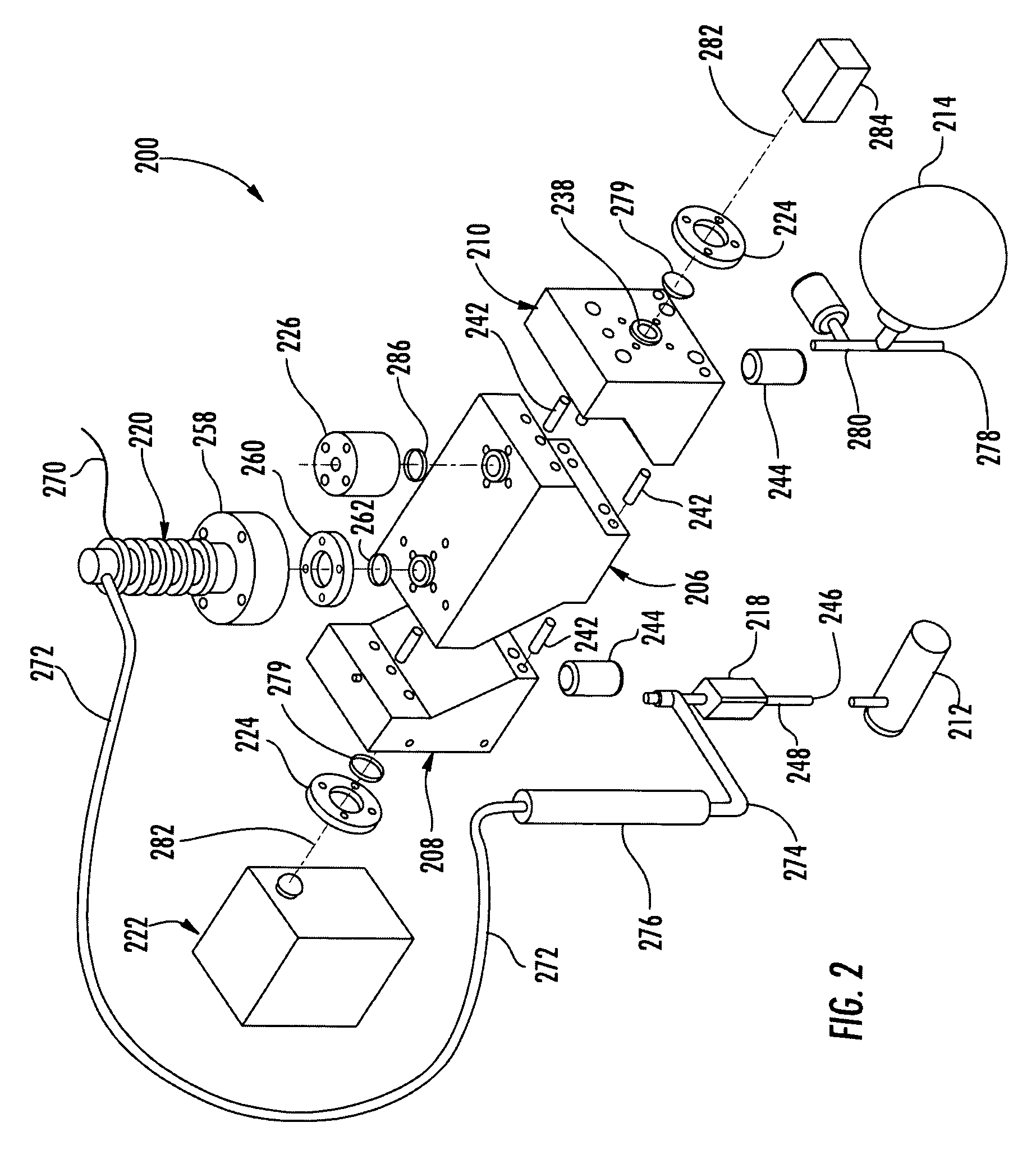Method and apparatus for photoacoustic measurements
a photoacoustic and instrument technology, applied in the field of photoacoustic instruments, can solve problems such as health hazards, affecting the global radiation balance and general circulation, and data obtained from such instruments may not accurately represent the natural state of the aerosol
- Summary
- Abstract
- Description
- Claims
- Application Information
AI Technical Summary
Benefits of technology
Problems solved by technology
Method used
Image
Examples
example 1
Computer Modeling of a Photoacoustic Instrument Operating at Three Wavelengths
[0082]The photoacoustic technique is typically implemented by illuminating a volume of aerosol laden air with light at a single wavelength that is modulated at the resonant frequency of the sample cavity where the air passes. Particles that absorb light at this wavelength are heated and thus heat the surrounding air, increasing the pressure inside the cavity. A sensor records this oscillating pressure, which has the frequency of the modulation of incident light and intensity proportional to the absorption coefficient of the particles. Multiple wavelengths of light may be simultaneously monitored by modulating each wavelength of light at a different frequency.
[0083]Computer model studies were conducted to examine the feasibility of operating a photoacoustic instrument with three wavelengths, with all three wavelengths operating simultaneously, but at slightly different frequencies within the passband of the...
PUM
| Property | Measurement | Unit |
|---|---|---|
| power | aaaaa | aaaaa |
| wavelengths | aaaaa | aaaaa |
| wavelengths | aaaaa | aaaaa |
Abstract
Description
Claims
Application Information
 Login to View More
Login to View More - R&D
- Intellectual Property
- Life Sciences
- Materials
- Tech Scout
- Unparalleled Data Quality
- Higher Quality Content
- 60% Fewer Hallucinations
Browse by: Latest US Patents, China's latest patents, Technical Efficacy Thesaurus, Application Domain, Technology Topic, Popular Technical Reports.
© 2025 PatSnap. All rights reserved.Legal|Privacy policy|Modern Slavery Act Transparency Statement|Sitemap|About US| Contact US: help@patsnap.com



